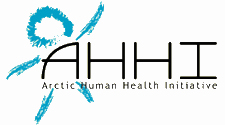Project Listing
Changing Environment & Human Health
Title: Novel Approaches for Assessing and Managing Cumulative Risks and Impacts of Global Climate: EPA–G2007–STAR-C2. An epidemiologic study of cumulative health effects of persistent organic pollutants and mercury in subsistence dependent rural Alaska Natives (AN) ![]() - Progress update (pdf)
- Progress update (pdf)
Summary of Activity
The project will be carried out in Yupik AN residents living in the Yukon-Kuskokwim River Delta (YKD) of Southwestern Alaska, between 10/2007 and 10/2011. Salmon are the largest component of the subsistence diet for AN in the YKD, with seals being second in importance in coastal communities. Prior work has shown that pregnant Yupik women have POPs levels similar to other Arctic women, with higher toxaphene, brominated flame retardants (PBDEs) and Hg levels than most other Arctic pregnant women. Objective: (1): Determine time trends in tissue levels of POPs, Hg, and omega-3 fatty acids (O3FAs) in salmon in the Yukon and Kuskokwim Rivers, and in a cohort of 200 pregnant Yupik women and infants. Hypothesis (1) Climate change has increased atmospheric and ocean transport of POPs and Hg to Alaska and to the Bering Sea with increased POPs and Hg uptake by salmon, marine mammals, and humans. Objective (2): Determine, using health record review, physical exam, and statistical analysis, any association between maternal levels of POPs and Hg and risk for adverse health outcomes in mothers, infants, and prior cohort children between 4-7 years of age. Hypotheses (2a): AN infants have a higher risk of a serious infection in the first yr. of life and a higher risk for congenital heart disease if they are prenatally exposed to POPs in the highest tercile of the cohort. Hypothesis (2b): AN 4-7 year old children prenatally exposed to Hg in the highest tercile have significantly higher blood pressure (BP) than those exposed to the lowest tercile. Hypothesis (2c): AN women with blood levels of POP’s in the highest tercile have a greater risk of diabetes. Experimental Approach: A sample of salmon entering the Yukon and Kuskokwim Rivers will be collected, and analyzed for Hg, and POPs. This duplicates a prior study by US Fish and Wildlife (FWS) in 2001 and will provide the basis for evaluating hypothesis (1). A cohort of 200 pregnant Yupik women will be recruited with blood obtained for POPs, Hg, and O3FA analysis, with a diet history to document salmon, marine mammal, and land mammal consumption. When compared to 350 women in prior Yupik cohorts, this will give a 9 year time series in human tissue levels of POPs and Hg, and show subsistence dietary changes over time. Medical record reviews on each woman after delivery, and each infant after 12 mos. of life, will document complications of pregnancy, illnesses, congenital abnormalities and developmental problems. Exam of the prior cohort infants, now age 4-8 years will document growth, neurodevelopment, BP, congenital abnormalities, illnesses, and serious infections in the first year of life. Expected results: (1) If climate change is causing changes in seawater levels of POPs and Hg, it will show in rising salmon and human tissue levels. This gives species specific risk assessment for State and Federal agencies and AN subsistence users. (2) Any risk associated with higher maternal levels of POPs and Hg will make AN aware of the need for risk reduction strategies for pregnant women. Using salmon and seal tissue levels, a strategy to maintain the health and cultural benefits of the traditional diet, and reduce risk, can be created. (3) If climate change is associated with rising salmon and human levels of POPs and Hg, it would provide data to further support reduction of POPs and Hg production and release, and support efforts to reduce global warming.
Contact
J Berner, MD,
Alaska Native Tribal Health Consortium
Anchorage AK
Email: jberner@anmc.org
© 2006, Arctic Human Health Initiatives
All rights reserved.
